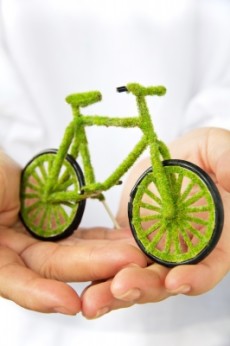Environment Practices
Taking care of the environment is a personal responsibility. But first, we need to establish an authentic connection with it. Making time to go to the park, nearby forest, river, lake, or seaside is a very good start. Focus on the concrete sensory experience: it is important to relate with the environment with our body and heart, rather than just our mind. Create metaphors for the things that we see, hear, and feel in nature. Be open and willing to learn from what we observe, as the cycles and events in nature are mirrored in our daily lives.
There is a deep healing connection between humans and nature. According to Professor Yoshifumi Miyazaki, a leading scholar in forest medicine, a 20-30 minute walk in the forest can produce tangible health benefits. His study of 288 volunteers in 24 different forest sites showed the following endpoint results compared to an urban control group: 13% decrease in cortisol, 18% decrease in sympathetic nerve activity, 2% decrease in blood pressure, 6% decrease in heart rate, and 56% increase in parasympathetic nerve activity, indicating heightened relaxation in the body.
Taking the dog for a quiet walk in the woodlands, going hiking in the forest, enjoying outdoor gardening, or having a picnic in the park are great simple ways to connect with nature. This helps us recognise our oneness with the process of life. Nature has its own stories to tell and by listening and learning from them, we can broaden and deepen our eyes, ears, and minds. In the words of Lao Tzu,
When you know nature as part of yourself, you will act in harmony. When you feel yourself as a part of nature, you will live in harmony.
It is from this authentic reconnection (99.99% of our evolutionary history we have lived in nature) that we make meaningful decisions as to how we can protect the environment. The main thrust of environmental activism, campaigns, or lifestyle changes is to get the green message to spread through the social media. Such environmental changes do not happen overnight; they require the efforts of the majority to be sustained.
Here are some key suggestions:
- plant a tree or create a garden; during photosynthesis, trees and other plants absorb carbon dioxide and give off oxygen. A single tree can absorb approximately one ton of carbon dioxide in its lifetime. Richard Reynolds’s book, On Guerrilla Gardening, is a good read on how to turn small patches of unproductive land to beautiful life-giving gardens. If you live in an apartment, hydroponic gardens are a great idea. Check out this TED talk, “A garden in my apartment” to find out more about this and this video which tells you exactly how to make your own “hanging water bottle garden” and how it works;
- clean up the environment. Start up your own group or get involved in environmental clean-up projects. These can be focused on cleaning up beaches, streams, or parks. Start in small areas, promote public awareness, and work your way to bigger areas with the help of volunteers;
- protect forests, woodlands, and wildlife. Get involved with governmental or non-governmental organisations to protect your local and national forests and wildlife. Support the creation and protection of animal habitats. Contact the WWF forest conservation programme and understand the importance of forests and wildlife and their contribution to our ecosystems. Petition and write letters to policy-makers: boycotts and non-violent civil disobedience are tools for protecting forests and wildlife. Stand up for what we believe is the right thing to do;
- support and encourage renewable energy development. The burning of fossil fuels has significantly contributed to global warming. Supporting governments and corporations to speed up innovations and their implementation is a powerful way to phase-out inefficient energy industries and promote a cleaner environment in the future. Learn about local developments. Find ways to educate and unite people to push for such developments;
- promote reducing, reusing, and recycling (3Rs) programmes. This concept is about reducing consumption and the amount of waste produced by reusing materials whenever possible and recycling them. This helps to reduce pile ups in landfills and natural spaces as well as to cut down the pollution in drainage systems and waterways. There are many means of incorporating the 3Rs in our lives and the key, again, is to create social awareness through our own example. Click here for solutions;
- use environmentally friendly products. From personal care to household and gardening products; many people can greatly help in the healing of the environment through education and intelligent purchasing. In many cases, although it is initially more costly to use these products, the long term savings and benefits are huge. Getting used to reading product labels to know what the products are made of and how they are made is important. When we buy environmentally friendly products, we directly support companies that take care of our planet. Check out this eco-friendly shopping and dining directory (Singapore).
